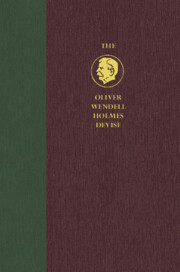
- Cited by 1
-
Cited byCrossref Citations
This Book has been cited by the following publications. This list is generated based on data provided by Crossref.
2022. Book Notes. Law & Social Inquiry, Vol. 47, Issue. 3, p. e1.
- Publisher:
- Cambridge University Press
- Online publication date:
- January 2022
- Print publication year:
- 2022
- Online ISBN:
- 9781009031141
- Subjects:
- Legal History, US Law, Law, History, Twentieth Century American History


